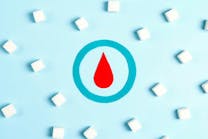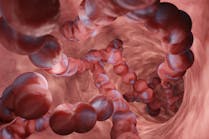The fear of an unknown virus swept the United States in the mid-1980s; health officials had no idea who or how many people were infected or how the virus spread. Newspapers covered the AIDS story; the New York Times, reported: “In many parts of the world there is anxiety, bafflement, a sense that something has to be done — although no one knows what.”2
Because, early on, the disease had been affiliated with the gay communities across the country, as the numbers of infected individuals grew, people diagnosed with HIV/AIDS were stigmatized. The most memorable of these is probably Ryan White, a young teen and one of the first hemophiliacs who contracted AIDS via a blood transfusion. When he was banned from school because of his disease, his lawsuit brought this population of AIDS sufferers to light and began to change the perception of the disease and whom it affected.3 fear of hospitals, surgeries, and blood transfusions spread widely across the country.4 In some cities in the United States, it was found that greater than one in 100 blood donations were infected with the virus.5 As researchers learned more about AIDS, they eventually found risk groups included not only hemophiliacs but also heterosexual intravenous-drug users and/or Haitian immigrants.6,7
In May 1983, Luc Montagnier, MD, isolated a retrovirus from lymphoid tissue; it was named lymphadenopathy-associated virus.8 Montagnier is best known for his 1983 discovery of the human immunodeficiency virus (HIV), which has been identified as the cause of AIDS. This discovery led directly to the development of a test for detecting the presence of HIV in blood samples.
In May 1984, American scientist Robert C. Gallo, MD, confirmed the discovery of the virus and renamed it human T lymphotropic virus type III (HTLV-III),9 claiming he had discovered HIV. But in 1992, the scientific community agreed it was Montagnier that should be credited with the discovery. For all practical purposes, the debate about who discovered HIV was finally settled in 2008 when the Nobel Prize in Physiology or Medicine was awarded to Montagnier for the discovery of HIV, while Gallo was omitted. Montagnier shared the prize with his colleague Francoise Barre-Sinoussi from the Institut Pasteur for their work on the discovery of HIV. In the mid-1980s, Gallo and his team co-discovered the virus they believed to be responsible for the killer disease known as AIDS. In addition, Gallo and his team developed a test that identified the virus in humans — the HIV-antibody blood test.
Eventually, Montagnier’s virus was designated as the human immunodeficiency virus, and the National Cancer Institute distributed virus cell cultures to five companies to develop a test to detect HIV infection.10 Abbott executives ordered up their private corporate jet and flew to Washington, DC, to pick up the virus and deliver the culture immediately to their researchers who then grew the virus, inactivated it, and commenced around-the-clock experiments to develop a test. Initially, the scientists were skeptical that this was the right virus; however, their skepticism turned to hope when a panel of 10 positive samples and 10 negative samples returned perfectly correlated diagnostic results during a feasibility study in the summer of 1984.
By March 2, 1985, the Health and Human Services Secretary announced approval of the first HIV antibody test that had been developed, a test made by Abbott Laboratories. Abbott’s current chairman and CEO, Miles White, recently said, “Our company has produced many scientific breakthroughs over its 122 years. None has been more dramatic, or of greater importance to the world, than the creation of the first HIV test.”
The first reagents shipped on March 4, 1985, giving blood banks across the country a tool to help protect the blood supply from HIV. “Today,” says White, “the residual risk of contracting HIV from donated blood in the United States is approximately one in 2 million due to the work of great scientists across the industry.”11 The innovation and investment continue: The organization has launched more than 20 HIV tests in the past 25 years.
Additionally, the company invests in its Global Surveillance Program designed to meet the challenge of HIV evolution and diversity. HIV genetic diversity can impact blood screening, diagnostics, therapeutic monitoring, and vaccine development. The company has established a well-characterized panel of specimens representing all HIV groups/subtypes/circulating recombinant forms, or CRFs, that are used to evaluate serological and molecular assay performance and to ensure that all HIV infections are detected.
Kenneth Marques Thornton is director of Brand Marketing for the Diagnostics Division of Abbott Laboratories. His responsibilities also include the Labs Are Vital initiative.
References
- Pneumocystis Pneumonia – Los Angeles. MMWR. 1981;30(21):1-3.
- Altman LK. Concern over AIDS grows internationally. New York Times. May 24, 1983.
- American notes voices, the ‘miracle’ of Ryan White. Time. April 23, 1990.
- History of AIDS up to 1985. http://www.avert.org/aids-history-86.htm. Accessed October 27, 2010.
- Busch MP, et al. Risk of human immunodeficiency virus (HIV) transmission by blood transfusions before the implementation of HIV-1 antibody screening. Transfusion. 1991;31:4-11.
- Centers for Disease Control and Prevention. Opportunistic infections and Kaposi’s sarcoma among Haitians in the United States. MMWR. 1982;31:353-354, 360-361.
- Centers for Disease Control and Prevention. Pneumocystis carinii pneumonia among persons with hemophilia A. MMWR.1982;31:365-367.
- Barré-Sinoussi F, Chermann JC, Rey F, et al. Isolation of a T-lymphotropic retrovirus from a patient at risk for AIDS. Science. 1983;220:868-871.
- Gallo RC, et al. Frequent detection and isolation of cytopathic retroviruses (HTLV-III) from patients with AIDS and at risk for AIDS. Science. 1984;224:500-503.
- Gallo RC. Crash Development of AIDS Test Nears Goal. Science. 1984;225:1128-1131.
- Dodd RY, et al. “Current prevalence and incidence of infectious disease markers and estimated window-period risk in the American Red Cross blood donor population” Transfusion. 2002;42:975-979.





